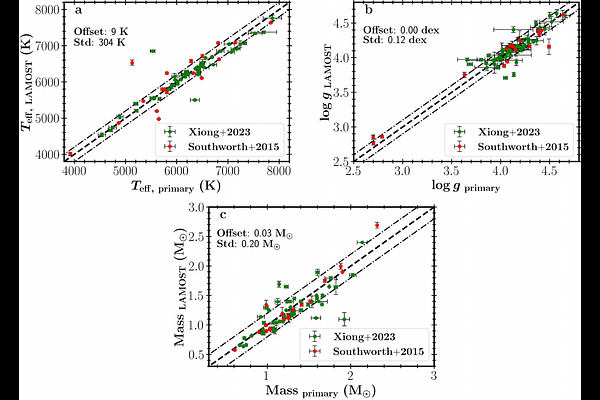Enhanced magnetic activity in rapidly rotating binary stars

Enhanced magnetic activity in rapidly rotating binary stars
Jie Yu, Charlotte Gehan, Saskia Hekker, Michaël Bazot, Robert H. Cameron, Patrick Gaulme, Timothy R. Bedding, Simon J. Murphy, Zhanwen Han, Yuan-Sen Ting, Jamie Tayar, Yajie Chen, Laurent Gizon, Jason Nordhaus, Shaolan Bi
AbstractStellar activity is fundamental to stellar evolution and the formation and habitability of exoplanets. The interaction between convective motions and rotation in cool stars results in a dynamo process that drives magnetic surface activity. In single stars, activity increases with rotation rate until it saturates for stars with rotation periods Prot < 3 - 10 d. However, the mechanism responsible for saturation remains unclear. Observations indicate that red giants in binary systems that are in spin-orbit resonance exhibit stronger chromospheric activity than single stars with similar rotation rates, suggesting that tidal flows can influence surface activity. Here, we investigate the chromospheric activity of main-sequence binary stars to understand the impact of tidal forces on saturation phenomena. For binaries with 0.5 < Prot/d < 1, mainly contact binaries that share a common thermal envelope, we find enhanced activity rather than saturation. This result supports theoretical predictions that a large-scale $\alpha$ - $\omega$ dynamo during common-envelope evolution can generate strong magnetic fields. We also observe supersaturation in chromospheric activity, a phenomenon tentatively noted previously in coronal activity, where activity levels fall below saturation and decrease with shorter rotation periods. Our findings emphasise the importance of studying stellar activity in stars with extreme properties compared to the Sun's.